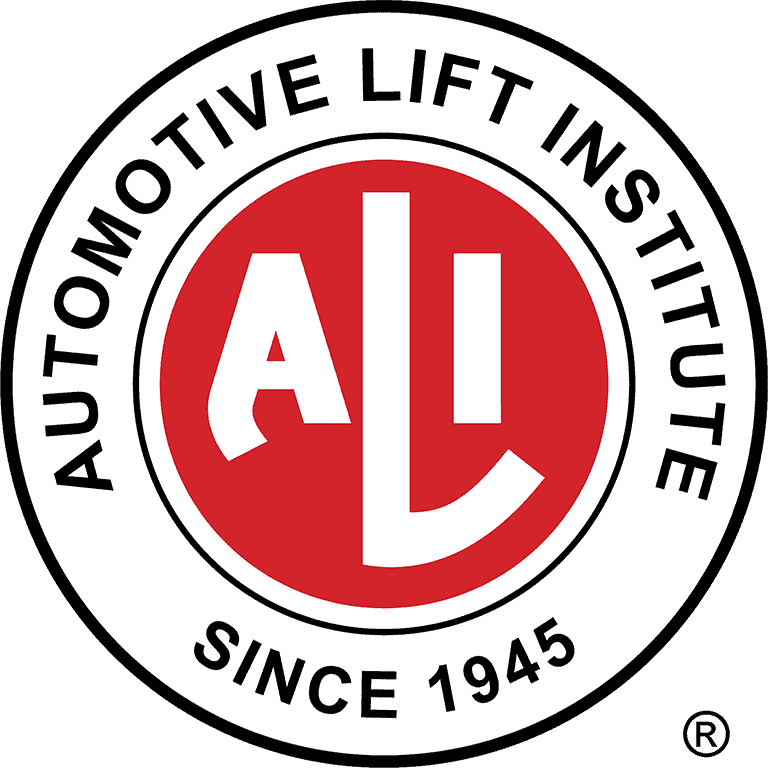
The letters “CE” are the abbreviation of the French phrase “Conformité Européene” which literally means “European Conformity”. The term initially used was “EC Mark” and was officially replaced by “CE Marking” which is now used globally in all European Union (EU) official documents.
The CE Mark on a product or machine identifies it as complying with all the of safety requirements established by the European Union. In Europe, the CE Mark is a requirement and not a voluntary process; however, some countries in Europe require that their own mark is used and their standards are met.
One of the most notable differences between CE and ALI certification is in the area of electrical safety. ANSI/ALI ALCTV mandates testing to UL201, Standard for Safety for Garage Equipment, which is harmonized with the National Electric Code (NEC). CE electrical requirements are different and in no way ensure compliance with the NEC. An important consideration relating to CE approval of lifts installed in North America is that American and Canadian electrical officials do not accept CE Marking as evidence of compliance with required safety standards. Claims that “Lifts are CE approved” bear no relevance to North American lift purchasers. The CE lift standard, EN 1493 is not tougher than ANSI/ALI ALCTV, as some might claim when unable to offer lift models that are ALI certified.
Become an educated buyer – consider the risk of installing a vehicle lift bearing only a CE mark and the possibility that your shop will be “red tagged” for lifts not listed to North American safety standards.
